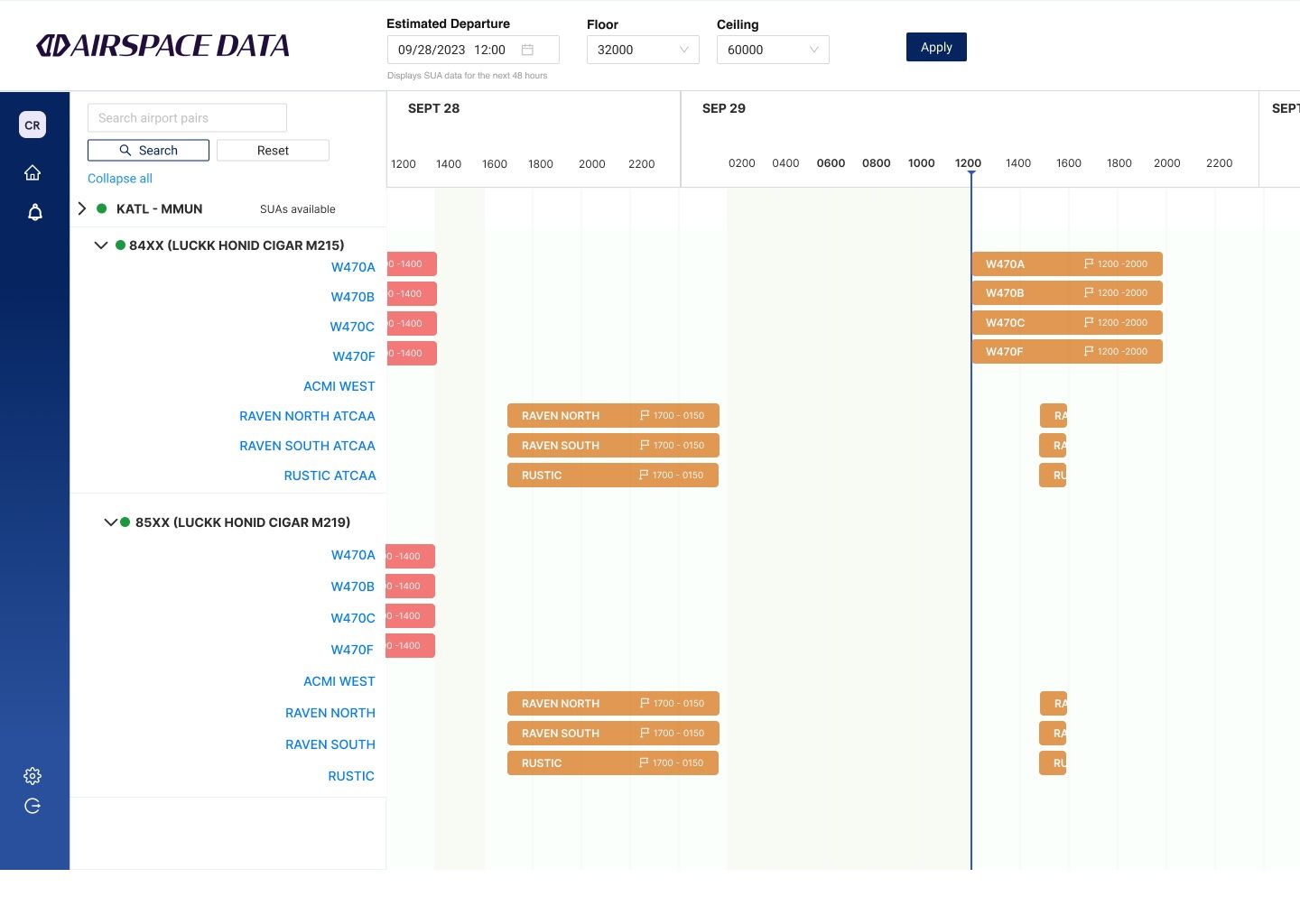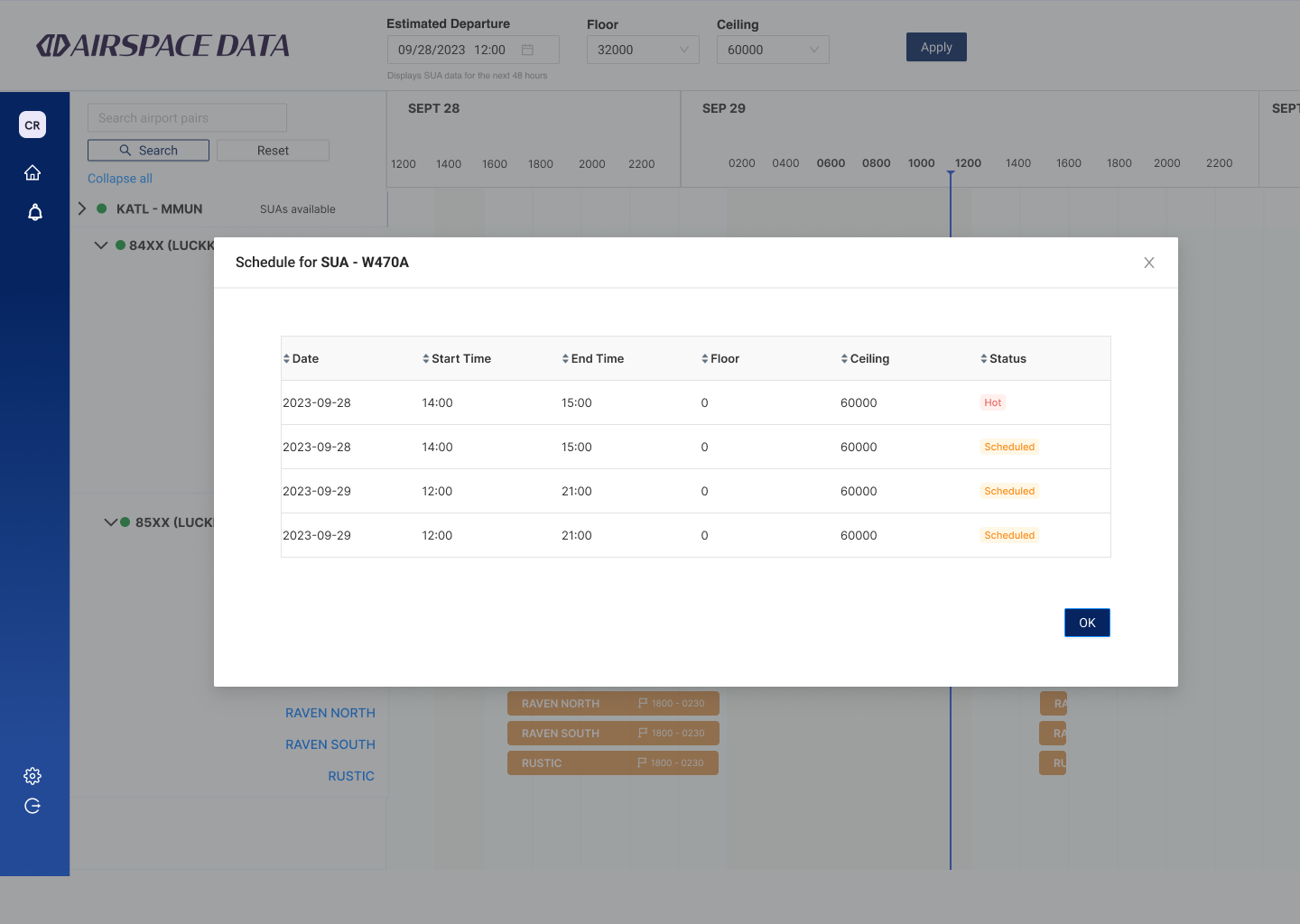Airspace Data: Delivering a Properly Calibrated MVP
United States airspace spans a staggering 29.4 million square miles. Of that amount, approximately ¼ is reserved for use by the military for training and testing of aircraft, new technologies, and advanced weapons.
Who occupies that space at any given moment is the result of close communication between the FAA, airline dispatchers and the US Department of Defense. With 45,000 commercial and civilian flights traveling through US airspace every day, even the most seemingly incremental improvements to this process can create a profound positive domino effect.
Airspace Data is a technology company aiming to do exactly that.
The short of it: Airspace reserved for the military is often unoccupied. But without a real time view of that valuable airspace, the FAA, the airlines, and private pilots can’t utilize it. Similarly, the military increasingly needs access to civilian airspace, and needs a better way to make those requests.
By equipping military-range operators, the FAA and airline dispatchers with the precise, timely data indicating the availability of military-controlled airspace, Airspace Data helps airlines plan routes more efficiently - leading to lower carbon emissions, faster flights, reduced fuel costs, and the type of dynamic transparency that elevates the aviation industry as a whole.
The military sees reduced manual workload in its communications with FAA, and enhanced mission readiness for key training and test objectives. Having gained early traction with major US airlines, a web-based MVP became the critical missing piece Airspace Data leadership needed. They looked to Foxbox to get it off the ground.
Building our solution with the military, FAA, and the airlines happens in scarce, high-stakes meetings. I can’t bluff my way through it, the product has to work. So what Foxbox did is really important because it does. It works. Airspace Data CEO Justin P. Oberman
Leading with Curiosity
Understanding, contextualizing and interrogating the problem was top priority.
Through a combination of collaborative workshops, user interviews, and design exploratories, our team gathered the pieces necessary to bring the puzzle into focus. While the client’s existing proof of concept and strategic vision helped us ask the right questions, we sought a first-hand perspective to find the right answers.

Alongside Airspace leadership, members of our UX and Product Strategy team visited with all stakeholders to deepen our contextual understanding and help inform upcoming interviews with airline dispatchers. One such interview revealed a pivotal flaw in our underlying assumptions.
“Having access to this type of data would be a game-changer,” one dispatcher said, “but not for my role.”
At their particular airline, the dispatcher explained, the navigation analyst would glean much more direct value from the tool.
While just one step upstream in the flight planning process, reframing the product strategy to serve both navigation analysts and airline dispatchers became critical to ensure we built the right thing the right way.
Without that understanding of who's really going to use it, we would have completely missed the mark. Foxbox Product Manager Arseniy Kozlov
Bringing 1.0 to Life
We built a detailed product roadmap, outlining how to serve both navigation analysts and dispatchers, as primary and secondary users respectively. Our team of Product Specialists and UX / UI designers then began to bring product concepts to life. Early low fidelity design mockups allowed us to elicit feedback from both Airspace Data leadership as well as the airline stakeholders we had now more precisely defined.
Because no two airlines operate the same way, and no two navigation analysts / dispatchers within those airlines focus on the same regions of airspace, a rapidly iterative design process helped us bring a methodical approach to the product’s central challenge: The user experience needed to be robust enough to manage the totality of relevant US airspace data, yet simple enough to fit seamlessly into existing route planning workflows.

Recognizing that our solution would introduce an additional step, pinpointing the role of user notifications became central to our ability to craft a seamless and impactful user experience.
With an emphasis on simplicity and precise communication, the Airspace Data interface minimizes cognitive load, while maximizing the type of context-dependent, time-sensitive information users require. Optimizing for simplicity also meant deliberately avoiding a map-centric format, in favor of a focused interaction model that mirrors the needs, preferences and priorities of both primary and secondary users. Working in close collaboration with Airspace Data’s technical leaders, we moved high-fidelity designs into production.

For our team of front end developers, engineers and QA specialists, success depended on a combination of continuous end-to-end testing, automated deployments and an ability to navigate the industry’s unique complexities and existing data infrastructure.
Ready for Takeoff
Airspace Data 1.0 was released to both commercial airlines and cargo carriers in December 2023. Version 2.0 was completed with the help of ongoing Foxbox development support in April of 2024, and is already being received very positively by major US Airlines.
For airlines engaging in city pair trials, the financial and environmental impact of the product is already on full display. The company and its airline partners have completed more than 2,700 flights, saving 2 million pounds of CO2 emissions, 60,000 flight miles, and 100,000 gallons of fuel.
With a product properly rooted in the end user’s perspective, Airspace Data Leadership is now better equipped than ever before to focus on building new customer relationships, expanding to new users, and evolving revenue models to best position the company for long-term success.
Foxbox was crucial to our ability to stay agile. Airspace Data VP of Engineering George Song
Technology Stack
Foxbox built the Airspace Data web application with the following technologies:
- Web frameworks: Remix, React
- ORM: Prisma
- Language: Typescript, Javascript
- Validations: Zod
- Visual Framework: TailwindCSS
- Build: Turbopack